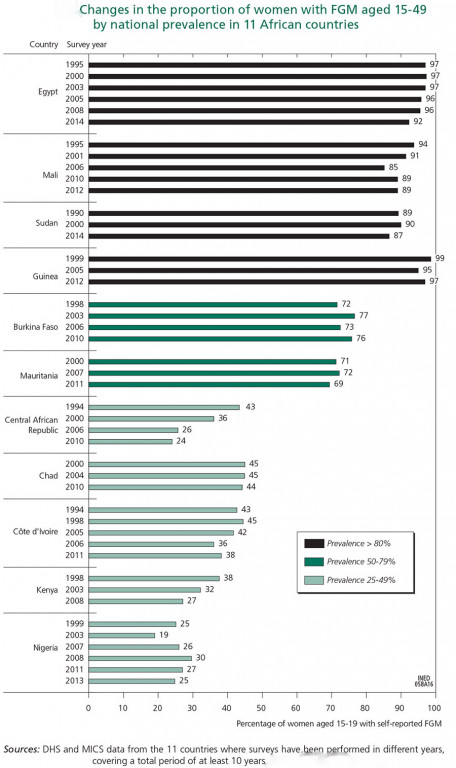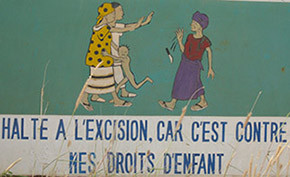Female genital mutilation (FGM)
Female genital mutilation is practiced primarily in African countries and in a few regions of the Middle East and Southeast Asia. It is defined as “all procedures that involve partial or total removal of the external female genitalia, or other injury to the female genital organs for non-medical reasons” (WHO, 1997). This specific form of violence practiced on women and little girls has harmful health consequences, often causing a series of risks throughout the women’s lives, the most common of which are infections, obstetrical complications and sexual dysfunction, according to available research.
Overview of current knowledge
Though the practice is difficult to quantify, UNICEF estimates at 200 million the number of women and girls worldwide who have undergone genital mutilation in 2016. Data in these women’s home countries is collected primarily through the Demographic and Health Surveys programme (DHS) and UNICEF-led Multiple Indicator Cluster Surveys (MICS) that take into account only women aged 15 to 49. In countries of immigration, the number of women concerned is usually estimated indirectly through the census, population registries and surveys; prevalence rates for country of origin are then applied to the results.
Is the practice declining?
FGM was initially described as a rite of passage to adulthood but it seems to be losing this ritual dimension while persisting as a strong social norm in the affected regions.
The effect of campaigns against FGM in countries of origin, heavily supported by international organizations and advocacy groups, remains difficult to measure. However, the practice does seem to be declining over the generations in some countries.

Surveys conducted in countries of origin show that the rising level of education among both women and men is favourable to a decline in FGM; also that the risk of mutilation is lower in urban areas. In countries of immigration, a considerable majority of immigrant families abandon the practice.
However, in some countries FGM has been medicalized in the last decades, leading to new increases—a reminder of the need to continue the struggle to eradicate this violation of women’s physical integrity.
Source: Armelle Andro, Marie Lesclingand, 2016, Female Genital Mutilation. Overview and Current Knowledge, Ined, Population, 71 (2)
Contact: Armelle Andro and Marie Lesclingand
Online: October 2016

